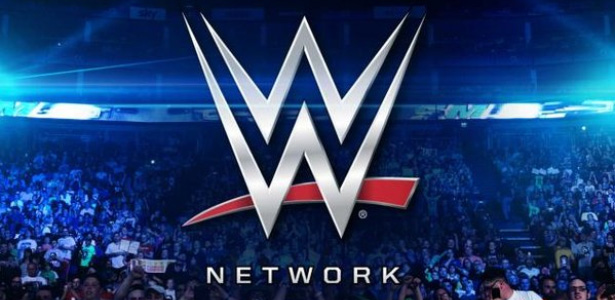
As I was scrolling through Twitter to celebrate the departure of the orange villain yesterday, I saw an LA Times article tweeted by the great Jim Valley, an associate of The Wrestling Observer Newsletter that recently made it back home after a five-month hospital stay after a life-threatening illness. Thankfully, now-dubbed, “The King of Recovery,” Jim Valley kicked out of the illness at 2.9 and looks to make a full comeback in 2021. Aside from being very happy to see Valley’s progress, it was very interesting to see the LA Times piece about streaming services and the struggle of even the biggest platforms to keep subscribers on a continuous basis. Using the major players like Disney+ and Netflix as examples, the article cited a survey that found that nearly half of those polled had cancelled at least one of their streaming services within the past six months. The question was asked and some examples were given as to how these platforms will keep their subscribers, especially with the addition of free, ad-based services like Tubi and others.
An interesting, though not surprising, article. It's an example of the challenges for WWE Network or any streaming service. Provide enough value to keep ppl from dropping. https://t.co/BDTANjN9dt
— Jim Valley (@JimValley) January 20, 2021
The WWE Network wasn’t mentioned, probably because services like Disney+ and Netflix have a much broader audience and the subscriber numbers aren’t really comparable. Still, the shifting tide of the streaming trends definitely has an impact on the WWE business model. Maybe I’m too much of an old soul, but I’ve always thought that giving so much content away within one service almost unintentionally lowers the value of each individual commodity. One of the major selling points of any product is the buzz or mystic around it, and too often, the potential buzz for an event can simply get lost in the shuffle of countless titles in the library. Granted, from a consumer prospective, more content for your money is better, but the reality is that there’s only a certain amount of content viewers will watch before they simply don’t have time to sit in front of the screen. Viewers prioritize the few main shows they want to watch and other entities, regardless of the quality might be skipped just because of time restrictions.
The LA Times write-up highlights this by explaining that a tread among major services shows that people will subscribe to watch a new film or show upon its release and then eventually cancel the service. Essentially, the catalog of classic content or newer content released around the same time doesn’t retain viewers beyond the shows that prompted their initial subscription. Again, there’s only so much time that a person has to sit in front of the screen, and after they’ve watched the specific series that was the reason for their subscription, they might not have the time to dive into another series.
Where this effects the WWE is two-fold because there are more streaming options now than in years prior and thus more competition for the entertainment dollar. Another aspect is that the WWE brand might experience a similar effect among subscribers that cancel. When the company launched The Network almost seven years ago, it was a game-changer in many respects because it basically eliminated the cable companies’ cut of pay-per-view revenue, offering the live broadcast with its subscription that included a vast library of classic content. Again, I still think that offering access to so much classic content at once indirectly lowered the value of that footage. The quality of a pay-per-view card on the Network didn’t have the same standard of what would’ve been considered a PPV worthy card during the traditional pay-per-view era. Don’t get me wrong, for diehard wrestling fans, it’s a great concept, but consider this, if the Network didn’t exist and full-episodes of The Monday Night War were put on-sale, similar to the Wrestlemania or Royal Rumble anthologies, years of content would’ve sold for more than $10 each.
Theoretically, such a stock of content is supposed to keep fans busy indefinitely, but some of the same hurdles of other streaming services can get in the way of that process. For example, there are always the other streaming services or the endless amount of free content on TV and online. Aside from the limited amount of time someone can spend watching content, there’s also a limit to how much wrestling someone is going to watch at a given time. Raw, Smackdown, NXT, and AEW provide hours of weekly content so regardless of the $10 price tag for a subscription, when does someone find the time to be able to watch enough of the network to justify the subscription?
Keep in mind, the WWE markets to the causal fan, not necessarily diehard pro wrestling fans. Even so, it’s a niche group that will dig through the archives to find the absolute gems of some of the territories. There are a group of former wrestling fans from the 90s that might subscribe for a certain among of time to watch Nitro again, but is that same demographic really going to look for Ted Dibiase’s bloody bout against Ric Flair in Mid-South in the 80s?
Different from Disney+ or Netflix, one show, outside of Wrestlemania probably won’t generate a major amount of subscriptions at once for the WWE Network. On the flip side, if Disney releases a movie in a particular month that people want to see, especially with the COVID restrictions of movie theaters, it can be a draw for a subscription. While one film can be a hit in itself, the WWE product as a whole is continuous so it takes consistency within the product to generate subscription numbers.
Obviously, there’s a demographic of diehard fans that will stay subscribed on a regular basis to enjoy JYD, Magnum TA, and Greg Valentine matches. Okay, maybe not Greg Valentine bouts, but that group of fans, by nature is a niche. It’s a harsh reality, but there’s a current generation of the WWE audience that doesn’t have any emotional connection to the boom period of the 90s, and the sluggish ratings during the pandemic suggest that the core group of WWE fans has eroded in recent years.
On the other hand, considering that their mega TV deals with USA and Fox will generate record-setting revenue for the next few years and any other revenue source is just extra profit based on the profit already being made from the TV contracts, perhaps this discussion is moot. Still, for a company that works almost exclusively for its stock price, it makes sense that the impact on streaming numbers across the board will reach the WWE network on some level, and the optics wouldn’t be good for the next conference call if there’s a noticeable dip in subscribers. With roughly 1.5 million subscribers, there’s not necessarily much of a margin for a decline, but this speaks to the greater point that management must find a formula to generate some hype around its product because the dynamics of the streaming industry, especially after WWE put a major amount of emphasis on the network since its launch could have a domino effect on its business model.
What do you think? Comment below with your thoughts, opinions, feedback and anything else that was raised.
Until next week
-Jim LaMotta
E mail [email protected] | You can follow me on Twitter @jimlamotta







